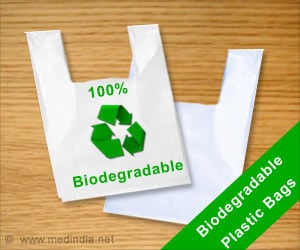Polyethylene furandicarboxylate is an attractive replacement for polyethylene terephthalate, because FDCA can be sourced from biomass instead of petroleum.

‘Worldwide, about 50 million tons of polyethylene terephthalate (PET) are produced each year for items such as fabrics, electronics, recyclable beverage containers and personal-care products.’





In a study published in the journal Nature, the Stanford team described their work on polyethylene furandicarboxylate (PEF), a promising alternative to polyethylene terephthalate (PET), also known as polyester, Xinhua reported. Many plastic products now are made from PET. Worldwide, about 50 million tons of PET are produced each year for items such as fabrics, electronics, recyclable beverage containers and personal-care products.
It is made from two components, terephthalic acid and ethylene glycol, which are derived from refined petroleum and natural gas. Manufacturing PET produces significant amounts of CO2, a greenhouse gas that contributes to global warming. In comparison, PEF is made from ethylene glycol and a compound called 2-5-Furandicarboxylic acid (FDCA).
"PEF is an attractive replacement for PET, because FDCA can be sourced from biomass instead of petroleum," Kanan said. "PEF is also superior to PET at sealing out oxygen, which is useful for bottling applications."
Despite the many desirable attributes of PEF, the plastics industry has yet to find a low-cost way to manufacture it at scale. One approach is to convert fructose from corn syrup into FDCA. But growing crops for industry requires lots of land, energy, fertiliser and water.
Advertisement
"It would be much better to make FDCA from inedible biomass, like grasses or waste material left over after harvest."
Advertisement
But making FDCA from furfural and CO2 typically requires hazardous chemicals that are expensive and energy-intensive to make. "That really defeats the purpose of what we're trying to do," Kanan said.
The Stanford team solved the problem using a far more benign compound: carbonate. The new technology, the researchers claimed, could provide a low-carbon alternative to plastic bottles and other items currently made from petroleum and dramatically lower the carbon footprint of the plastics industry.
Source-IANS









